
Serendipity Smith is the pseudonym used by Tuesday McGillicuddy’s mom. Serendipity is a famous children’s author who goes missing while working on the last of her adventure series. On their quest to find her mom, Tuesday and her faithful dog find myriad adventures involving writing, mystery, mayhem, and pirates in a breathtaking, satisfying, often humorous fantasy.
Finding Serendipity

When the human to whom Angus (a brownie) is bound dies, he must leave his native Ireland to serve Sarah’s nearest relative. Serving an American girl named Alex means she must acclimate to having a magical creature and whose slovenly habits are in stark contrast to a cleanliness-obsessed brownie.
Diary of a Mad Brownie

A boy in a fedora uses his pen to travel, grow, “make giants of old men/who have seen better days” (an homage to his late father, Walter Dean Myers), and visit places real and imagined. Black and white line drawings and sophisticated, poetic language effectively convey the power of art and imagination and are sure to spark conversation.
My Pen
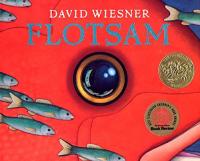
A bright, science-minded boy goes to the beach equipped to collect and examine flotsam — anything floating that has been washed ashore. Bottles, lost toys, small objects of every description are among his usual finds. But there’s no way he could have prepared for one particular discovery: a barnacle-encrusted underwater camera, with its own secrets to share … and to keep. (2007 Caldecott Medal Winner)
Flotsam
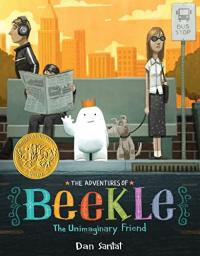
This magical story begins on an island far away where an imaginary friend is born. He patiently waits his turn to be chosen by a real child, but when he is overlooked time and again, he sets off on an incredible journey to the bustling city, where he finally meets his perfect match and-at long last-is given his special name: Beekle. (2015 Caldecott Medal Winner)
The Adventures of Beekle: The Unimaginary Friend

The children first introduced in Journey (opens in a new window) begin another imaginative adventure armed with magic markers that add color to an otherwise monotone world. No words are needed as this visual voyage stands on its own and is sure to encourage multiple examinations.
Quest

Tales translated into English from Danish author Hans Christian Andersen have become part of the oral tradition and adapted into movies and more. Faithful versions of some of the best-known tales have been compiled anew, delicately illustrated and presented in a handsome volume. Be warned, however, Andersen’s endings are not always happy!
An Illustrated Treasury of Hans Christian Andersen’s Fairy Tales
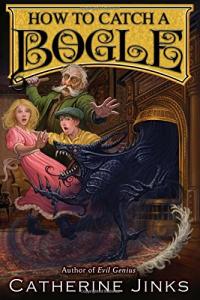
Bogle-catching in Victorian England is comes alive in this deliciously spooky tale effectively presented in an accented voice and a capella singing.
How to Catch a Bogle

“Noi lived with his dad and six cats by the sea.” But he was lonely until he rescues a baby whale that reconnects Noi with his busy fisherman father. Gentle language is enhanced by mellow, warmly hued illustrations of their seaside home.
The Storm Whale

What causes the remote, or just one sock to disappear? Dr. Zooper provides the answers in his guide to the Mischevians. Young artists can add to the list of these silly critters as they laugh and share this pseudo-serious take on why things disappear.
The Mischievians

Cinderelephant lives wither cousins, the Warty Sisters, who are real pigs (actually, warthogs). The familiar storyline takes on new dimensions with a huge heroine whose prince matches her size. Comic illustrations add enormously to the outrageous, funny parody.
Cinderelephant

Tasty recipes made by a young orphan named Cady with a special Talent are at the center of the mystery that involves old suitcases and an old peanut recipe — with just a touch of magic. The well-paced plot with its memorable characters unfolds through crisp narration. (Tasty recipes included!)
A Tangle of Knots
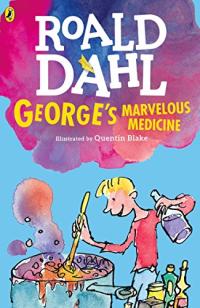
When young George concocts a medicine in an attempt to alter his old grandmother’s nasty disposition, he quickly loses control of the situation for a laugh-out-loud listen. Appropriately narrated in a British accent, this is vintage Dahl (with a hint of sardonic humor).
George’s Marvelous Medicine

Aficionados of comic books will appreciate these fresh interpretations of fairy tales. Seventeen tales, some well-known others less so, have been reworked by different comic book artists are sure to delight sophisticated young readers.
Comic Fairy Tales
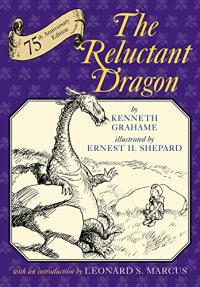
The Boy, a shepherd, helps his friends — a large, peaceful dragon and dragon-slaying St. George — find a solution that satisfies all. Line drawings by Ernest Shepard (illustrator of Winnie the Pooh) and enduring themes continue to appeal. An introduction to the 75th anniversary edition by Leonard Marcus puts the tale into historical context.
The Reluctant Dragon

Katy’s adventure begins on a rainy day with her friend, Louise, when Katy wonders why her Aunt Martha left things hidden — and locked — in Katy’s room. Modern classics, these gentle fantasies have been made available again to delight contemporary readers.
What the Witch Left

The original form of poetry (introduced in Mirror Mirror (opens in a new window)) is again used to present different perspectives on the same topic. Characters large and small — from the Emperor in a birthday suit to tiny Thumbelina — a clever form and lush illustrations bring well known characters into focus.
Follow Follow: A Book of Reverso Poems
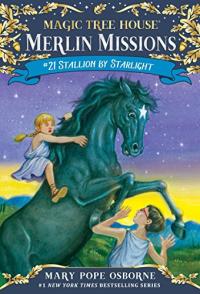
In this Magic Tree House book, siblings Jack and Annie time travel to ancient Greece to help Alexander the Great, successfully read by the book’s author.
Stallion by Starlight
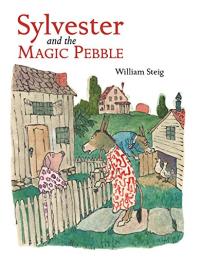
When a young donkey named Sylvester comes across a magic pebble, he saves himself from a confrontation with a lion by wishing himself into a rock. Frantic parents search for Sylvester until they stop for a picnic on a large rock. Rich language and humorous cartoon illustrations make this a memorable classic.
Sylvester and the Magic Pebble

A girl finds a book with a red cover on a winter day that transports her to a sunny beach. The idea of getting lost in a book (figuratively and magically) is presented wordlessly; only illustrations are used. The story can be told or written any number of ways according to the writer’s interpretation of the story.
The Red Book

Join three children who find a magical piece of chalk that begins an exciting series of events to figure out “what next.” This might be fun to use together with Crockett Johnson’s Harold and the Purple Crayon.
Chalk
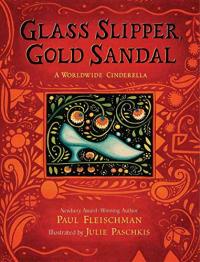
Cinderella stories are found around the world; here, they have been fused into one tale with special characteristics in text and illustrations that reflect the different origins. Expand parts of the story to echo the traditions of the culture and its history from which it comes. It may be possible to develop a map of tales (e.g., ancient vs. modern countries, or as a visual as to where it is/was told).
Glass Slipper, Gold Sandal: A Worldwide Cinderella

Annabelle finds a box with colorful yarn from which she makes sweater for all, adding color and life to a dull landscape. The box is empty when stolen by a greedy man but is yarn-filled when it returns to Annabelle. Textured pictures and understated text on open pages tell an engaging yarn.
Extra Yarn

With the help of a little bit of magic, Mr. Renny’s paintings come to life, literally. But when his friend Rose wants a painting, how will the floppy-eared canine artist reverse the charm? A touch of traditional tales is sure to delight adult sensibilities but the book is sure to charm children.
